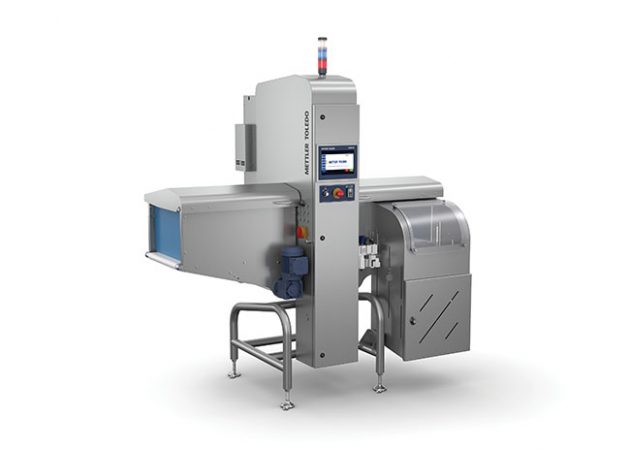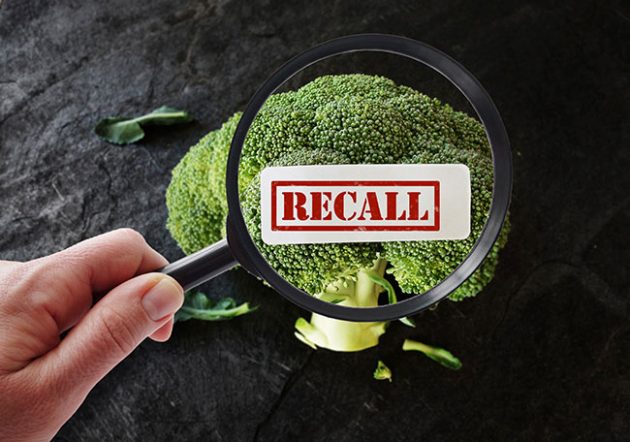
Reputations on the Line
By Davor Djukic, National Sales Manager - Product Inspection, METTLER TOLEDO
Food Safety Metal Detection X-Ray Mettler-Toledo X34Preventing physical food contamination can be achieved by driving up food production standards

Davor Djukic, National Sales Manager – Product Inspection, METTLER TOLEDO
Food safety scares often make news headlines, and a well-publicized incident can destroy a company’s brand name in an alarmingly short time period.
Product recalls caused by physical contamination can cost millions of dollars.
Unfortunately, contamination incidents are on the rise.
The primary concern for food manufacturers in eliminating physical contamination is customer safety.
If fragments of any foreign body enter the food chain, there is a chance that they could seriously harm the health of consumers. Therefore, preventive measures involve a mix of regular risk assessments, robust quality procedures and compliance with regulatory requirements.
Product recalls caused by physical contamination are also a considerable risk to reputation.
Consumers expect to receive the final product as promised, so the presence of any foreign body––however harmless––is unacceptable. Branding built up painstakingly over time can be seriously undermined by bad publicity surrounding a food scare, and sometimes the company simply cannot survive the experience.
Manufacturers of product inspection technologies put a lot of effort into continuous development to make sure that their systems meet the needs of modern food production.

The X34 X-Ray Inspection System from METTLER TOLEDO is a single lane solution that is specifically designed to inspect small and medium-sized packaged products.
The X34 from METTLER TOLEDO is an advanced X-Ray system featuring diode technology and a generator that automatically adjusts the voltage and current depending on the product being inspected.
This certifies that power and contrast levels are optimized for every product, ensuring enhanced detection performance.
Food manufacturers can therefore achieve high recognition sensitivity for even the very smallest contaminants, while also reducing their energy consumption.
The X34 is also equipped with automated product setup that speeds up product changeovers, dramatically decreasing the chance of human error and greatly reducing the number of false rejects.
Metal detection technology advances also focus on improving accuracy and reducing false rejects.
Natural products such as poultry, meat and dairy often have a high degree of moisture or salt content altering the product signal. Conventional metal detector technology struggles to cope with this variation with the risk of a high false reject rate or an unacceptable reduction in online sensitivity.
Metal detectors that utilize the latest multi-simultaneous frequency technology, such as the Profile Advantage from METTLER TOLEDO, make the difference.
This technology incorporates a product signal suppression technique to effectively cancel out the product signal from difficult to inspect products and virtually eliminate false rejects.
The constant trend towards digitalization is also driving the collection and analysis of data as a tool to support consumer safety and effective brand protection.
This information is essential for predictive benchmarking and uses trend analysis to prevent errors, ideally before they occur.
ProdX software from METTLER TOLEDO allows manufacturers to control the entire product inspection management process from a single point or from multiple remote locations, eliminating the need for time-consuming production line patrols.
Physical contamination continues to be an extremely serious concern, and effective counter-measures need to keep pace as packaging and production trends change over time.
Advanced product inspection technologies are available to ensure that food manufacturers meet regulatory, retailer and consumer requirements, while preparing for future-proofing processes of the digital factories of the future.
Retailers have clear thoughts about what they expect from their supply chain.
Suppliers need to meet criteria ranging from a proactive approach to staff training to contingencies against contamination incidents.
METTLER TOLEDO identifies five key ways retailers are driving up food production standards and how product inspection technology can help manufacturers and packagers deliver on retailer expectations.

BRAND DEFINITION
Retail brand values are as much about customer loyalty and cultural expectations as they are about the way the food looks and tastes.
The process of how the product and packaging are produced must demonstrate support for brand values ranging from healthy eating and ethical sourcing to quality and price point.
Product inspection technologies are not just about contamination detection; they also support brand ethos.
For example, checkweighers can ensure consistent portion control, while X-Ray systems can scan for product defects.
During packing, vision systems are invaluable for checking that labels contain the correct information and are applied in the right place.
TRACEABILITY
Consumers are more invested than ever in where their food comes from.
Retailers are therefore placing increasing emphasis on traceability, insisting that their suppliers implement effective and verifiable traceability systems.
The evolution of increasingly sophisticated software means product inspection systems are now capable of performing critical quality and integrity checks, and assimilating and analyzing data to add value. Use of Ethernet and Fieldbus connectivity makes it easy for food manufacturers to retrieve this data and generate reports to meet retailer audit requirements for traceability.
PACKAGING INNOVATION
The right packaging ensures that the retailer’s product is tamper-proof, protected from damage in transit, kept fresh for longer and stands out on the shelf.
A recent revelation about the environmental impacts of plastic is also adding urgency to the drive for more sustainable packaging.
Complex packaging designs can create blind spots in which physical contaminants may be present.
Some X-Ray systems can now be configured to eliminate this phenomenon, improving food safety.
Innovations in metal detection techniques include Multi Simultaneous Frequency and Product Signal Suppression technology to overcome this issue.
TRAINING & SKILLS
Retailers expect their suppliers’ commitment to developing people to be the same as their own.
Appropriate training on hygiene, the importance of maintaining accurate records and how to use equipment correctly means greater efficiency, fewer mistakes and higher quality.
Intuitive software on product inspection systems can offer semi- or fully-automated product set-up routines that reduce the possibility of human programming errors.
The software can also optimize sensitivity levels to reduce false reject rates and save wastage costs.
CRISIS MANAGEMENT
Food recalls are a retailer’s worst nightmare and can destroy a brand name in an alarmingly short time.
Retailers have developed comprehensive crisis management procedures that define the role of suppliers within their contractual obligations.
Product inspection systems are strategically deployed to prevent contamination, uphold conformity and check that the correct information about ingredients and expiration dates is displayed on labeling.
Their ability to record events in real time is invaluable in a crisis, ensuring that critical data like batch codes and dispatch dates are readily available.
Advertisement

